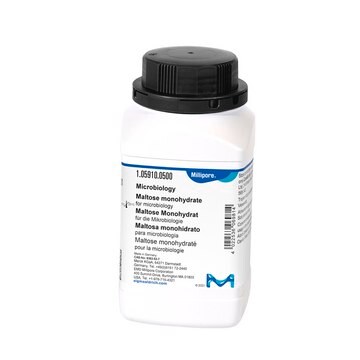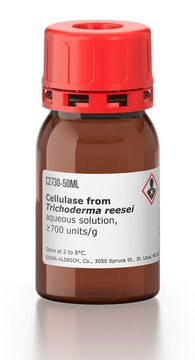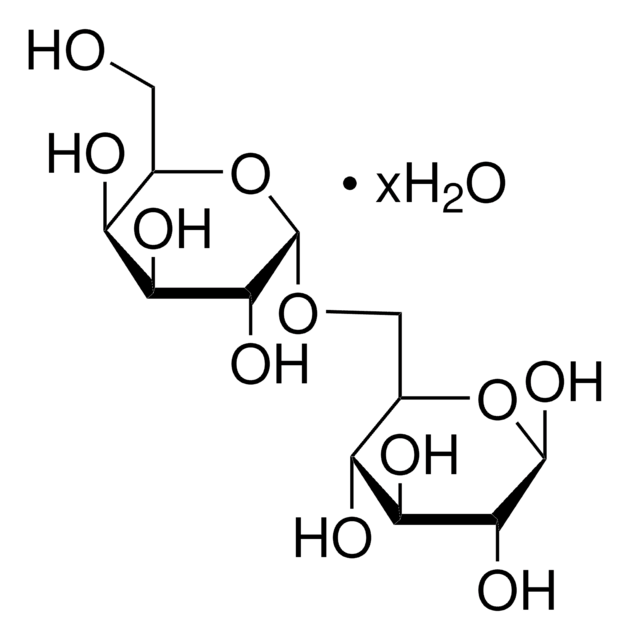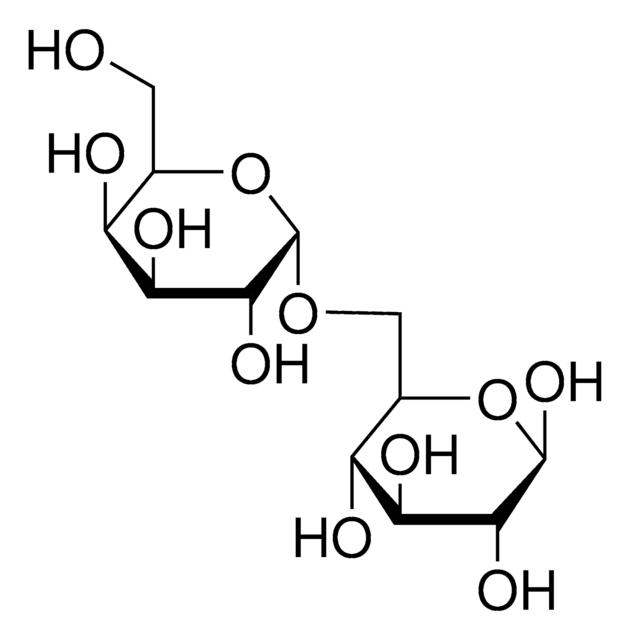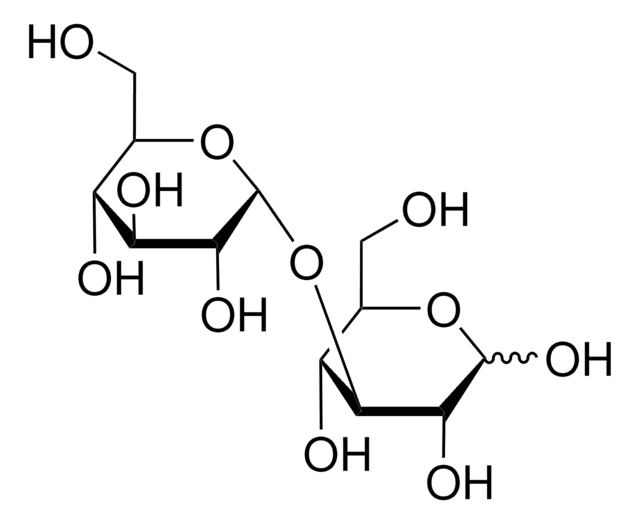C7252
D-(+)-Cellobiose
≥98% (HPLC)
Synonym(s):
β-D-Glc-(1→4)-D-Glc, 4-O-β-D-Glucopyranosyl-D-glucose
About This Item
Recommended Products
biological source
plant
Quality Level
Assay
≥98% (HPLC)
form
powder
optical activity
[α]/D 34±1, c = 10% (w/v) in water
technique(s)
HPLC: suitable
color
beige
mp
239 °C (dec.) (lit.)
solubility
water: 50 mg/mL, clear, colorless
storage temp.
room temp
SMILES string
OC[C@@H](O)[C@@H](O[C@@H]1O[C@H](CO)[C@@H](O)[C@H](O)[C@H]1O)[C@H](O)[C@@H](O)C=O
InChI
1S/C12H22O11/c13-1-4(16)7(18)11(5(17)2-14)23-12-10(21)9(20)8(19)6(3-15)22-12/h1,4-12,14-21H,2-3H2/t4-,5+,6+,7+,8+,9-,10+,11+,12-/m0/s1
InChI key
DKXNBNKWCZZMJT-WELRSGGNSA-N
Looking for similar products? Visit Product Comparison Guide
General description
Application
- as a component in test sugar solution for cellobiose-mannitol permeability test
- in the preparation of lyophilization solutions to study its ability to protect lyophilized β-galactosidase from enzymatic activity loss and secondary structure changes during storage
- as a fermentation/growth substrate to grow Clostridium thermocellum to study its impacts on the qualitative and quantitative changes in cellulosome composition
Other Notes
Storage Class Code
11 - Combustible Solids
WGK
WGK 1
Flash Point(F)
Not applicable
Flash Point(C)
Not applicable
Personal Protective Equipment
Certificates of Analysis (COA)
Search for Certificates of Analysis (COA) by entering the products Lot/Batch Number. Lot and Batch Numbers can be found on a product’s label following the words ‘Lot’ or ‘Batch’.
Already Own This Product?
Find documentation for the products that you have recently purchased in the Document Library.
Customers Also Viewed
Our team of scientists has experience in all areas of research including Life Science, Material Science, Chemical Synthesis, Chromatography, Analytical and many others.
Contact Technical Service





